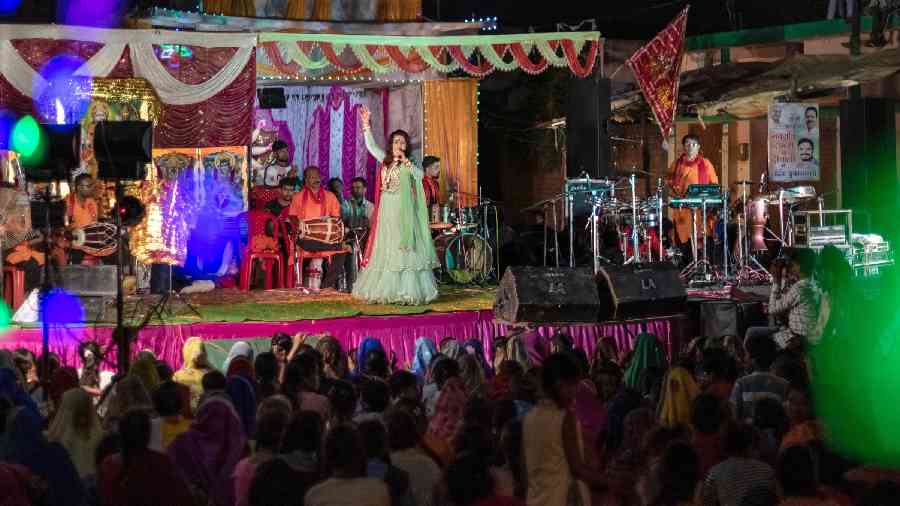Pop culture in India is not new. But what is new are the multiple avatars in which this format of music is making its comeback today. Penetrating through rural India, especially the northern belt, it represents a peculiar combination of identity, assertion, hate and entertainment.
One such genre is Hindutva pop. The term, Hindutva, dominates our lives. This school of music, with graphic lyrics, catchy tunes and strong caricatures of anti-minority sentiments, is the latest marvel in the politics of hate in India. The pop format effectively targets the youth as its main consumers. Echoing the spirit of Hindutva embedded in violence, Hindutva pop culture champions hate as entertainment.
Hindutva pop is categorised under ‘patriotic songs’ on YouTube. The lyrics are provocative, diffusing the line between devotion and disdain; the visuals are hyper-real. Some of these songs are called ‘Hindu anthems’, dismissing the spirit of secularism.
On the other end of the spectrum stands Dalit pop. Unlike Hindutva pop founded on hate, Dalit pop revolves around identity assertion of Dalits through icons like Ravi Das, Kabir, Bhimrao Ambedkar and the like. Dalit pop has gained massive popularity, especially in Punjab catering to its caste-based rights movements. Dalit pop singers do not christen their genre of music as patriotic; their primary philosophy is to rise against the politics of caste-Hindu domination. Singers like Ginni Mahi have popularised Dalit pop among college students in Delhi and its neighbouring areas. One of her most popular songs, “Fan Baba Sahib di”, had received 5.7 million views on YouTube.
In comparison to Dalit pop, Hindutva pop is relatively new in the ‘market’. Despite that, it is hugely popular, especially on digital platforms. Icons like Laxmi Dubey (picture), with 303K YouTube subscribers, dominate the scene with saffron attires, tridents, guns and tilaks. Her song, “Har ghar bhagwa chhayega”, with 65 million views on YouTube, is built on the theme of Hindutva appropriation of the whole of India. Looking from the standpoint of monetisation and content creation, Hindutva pop is far more successful than Dalit pop. But as songs of resistance, the likes of Ginni Mahi deserve appreciation.
While both cater to identity, Hindutva pop is based on the subversion of all ‘other’ identities — except for caste Hindus — while Dalit pop is based on an assertion of Dalit worldviews. Dalit pop is not the first of its kind: songs of resistance go way back in history. On the other hand, the central theme of Hindutva pop is minority hatred, dismissal of history and bloodshed. Through their visuals and explicit lyrics, the songs are packaged to convince listeners that Hindutva as a philosophy is essentially rooted in ‘cancel culture’ at best and discrimination and systematic Othering at worst. Songs like “Pukarti Ma Bharti/ Khoon se tum tilak karo aur goliyon se aarti” urge the sons of Ma Bharti to take up the sword and swear by their own blood to combat the enemy with bullets. We find consistent references to “ranbhoomi” (battlefield) where the brothers will encounter the enemy and win the war with bullets to establish both “ram rajya” and“ram mandir”. One line even mimics the Hindutva agenda with the popular phrase, “Mandir yahin banayenge”. Another popular song, “Tel lagao Dabur ka/ Naam mitao Babar ka”, is about wishing away Mughal rule from public memory.
As youth entertainment, this neo pop culture of Hindutva has chosen music as a medium for spreading hate and anti-minority sentiments. Will these songs gain popularity beyond the Hindi belt? Are we going to witness other versions of Hindutva pop in state-specific languages as the general election approaches?
Arani Basu is a sociologist based in Berlin. Amrita Datta is a Marie Curie Fellow at University of Siegen











